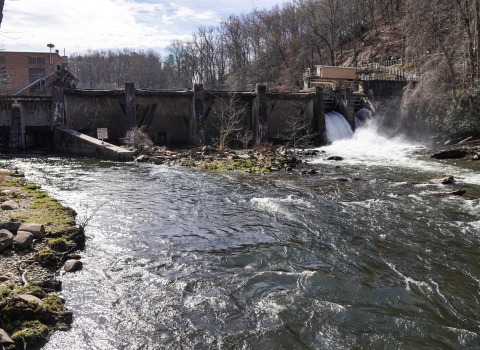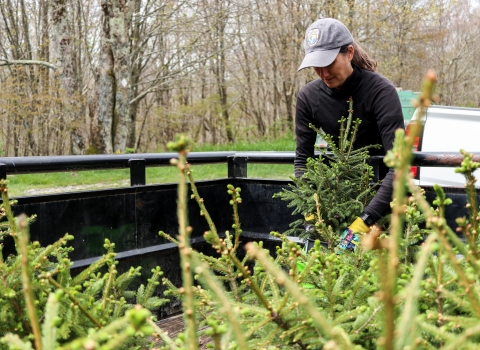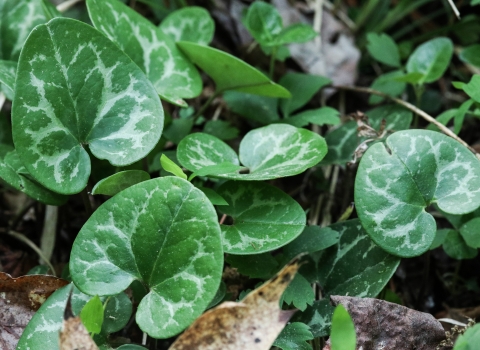Projects and Research
Working with others is at the core of how we operate, and through those partnerships, we develop a number of conservation projects across the southern Appalachians, from conserving Carolina northern flying squirrels on the tops of the highest mountains in the eastern United States, to working to improve stream health for the Appalachian elktoe mussel. Learn more about some of the key efforts we have underway.
On October 3, 2021, a slug of sediment was released from Ela Dam, which impounds the Oconaluftee River in western North Carolina, smothering the streambed downstream. This action unleashed a wave of momentum for removing the nearly 100-year-old dam and reconnecting 549 miles of streams in the Oconaluftee River watershed with the Tuckasegee River.
LocationEla Dam, also known as...
Through its Partners for Fish and Wildlife Program, the U.S. Fish and Wildlife Service provides financial and technical assistance to private land owners, and local and tribal governments who want to improve fish and wildlife habitat on their land to benefit migratory birds and fish, and threatened and endangered species (see the link below for more general information about the program).
...At 6,684 feet, Mount Mitchell, in Yancey County, N.C., is the highest peak east of the Mississippi River. To its north, across the Toe River Valley, is Roan Mountain, topping out at 6,285 feet. Just to the east, Grandfather Mountain comes in at 5,946 feet.
In total, the Southern Appalachians are home to eight “sky islands” – peaks and ranges with unique habitats and a mix of plants...
The sicklefin redhorse is a fish found only in the western tip of North Carolina and a sliver of North Georgia. Once considered for the federal endangered species list, a handful of partners have come together to conserve this rare fish, expanding our knowledge of where it lives and it's seasonal migration, and propagating it in captivity for stocking into the wild.
Partners in...
The Bog Learning Network is a consortium of scientists and land managers working to advance the restoration and management of Southern Appalachian Bogs. It provides a forum for sharing information and experiences about bog management and conservation. It also helps bog managers find important information, determine resource needs, and helps find ways to meet those needs.
...The rusty-patched bumble bee was once found from Georgia to Maine to the Dakotas. It hasn’t been seen in Western North Carolina since 2004 and in 2017 it was declared endangered, becoming the first bumble bee to receive Endangered Species Act protection.
For many, the rusty-patched bumble bee turned attention to the broader plight of pollinators. In 2020 the Service found that...
NOTE: This project is now complete. On July 8, we published a final rule in the Federal Register, delisting dwarf-flowered heartleaf effective August 7, 2025. For related regulatory materials, visit https://www.regulations.gov/docket/FWS-R4-ES-2019-0081
On April 23, 2020, we proposed removing the dwarf-flowered heartleaf from the federal list of threatened and...
The French Broad River Partnership was formed in the fall of 2018 to maintain and improve stream health within the French Broad River Watershed for environmental and economic benefits.
Vision:
That broad‐based interests work collaboratively to ensure the French Broad River Watershed serves as a source of drinking water and recreation while supporting biodiversity...
On September 7, 2021, we proposed adding the pyramid pigtoe (Pleurobema rubrum, also known as the pink pigtoe), to the federal list of threatened and endangered species, as threatened (Read the proposal). On March 26, 2024 we withdrew that proposal, a decision based on new genetic research demonstrating that the pyramid pigtoe is not a distinct species (Read the withdrawal).
...









